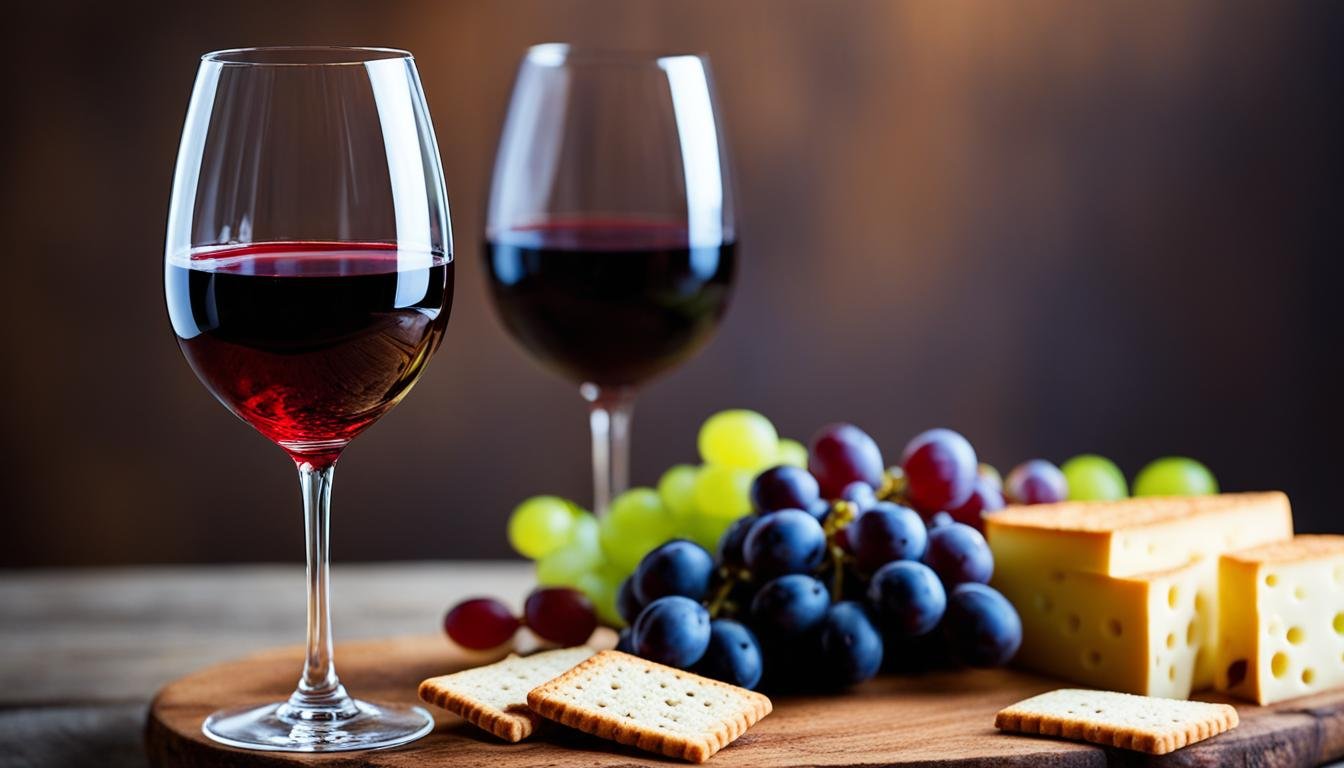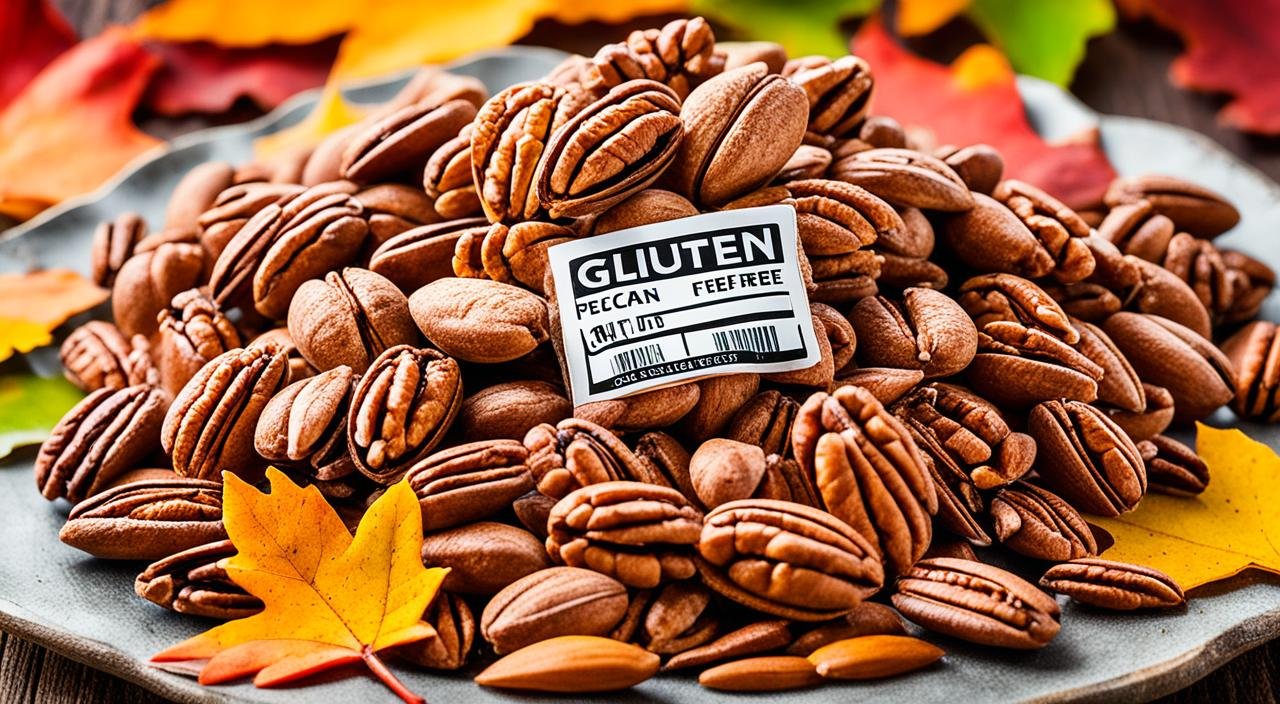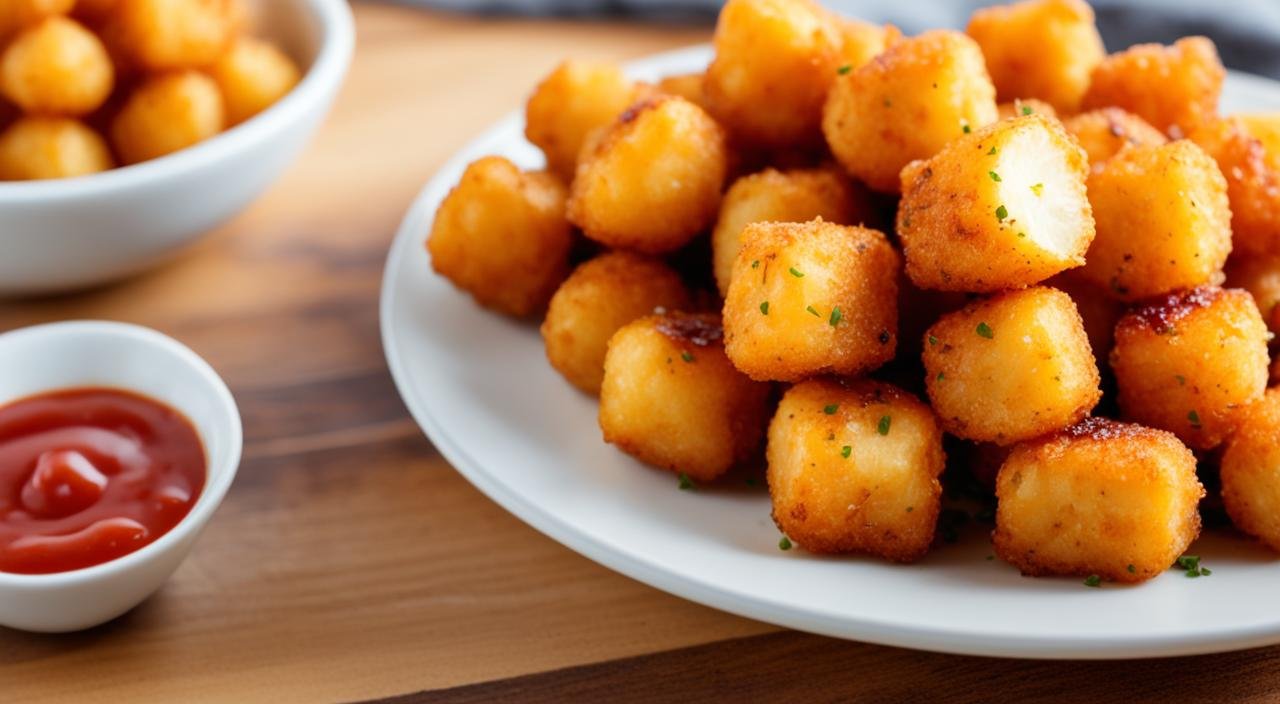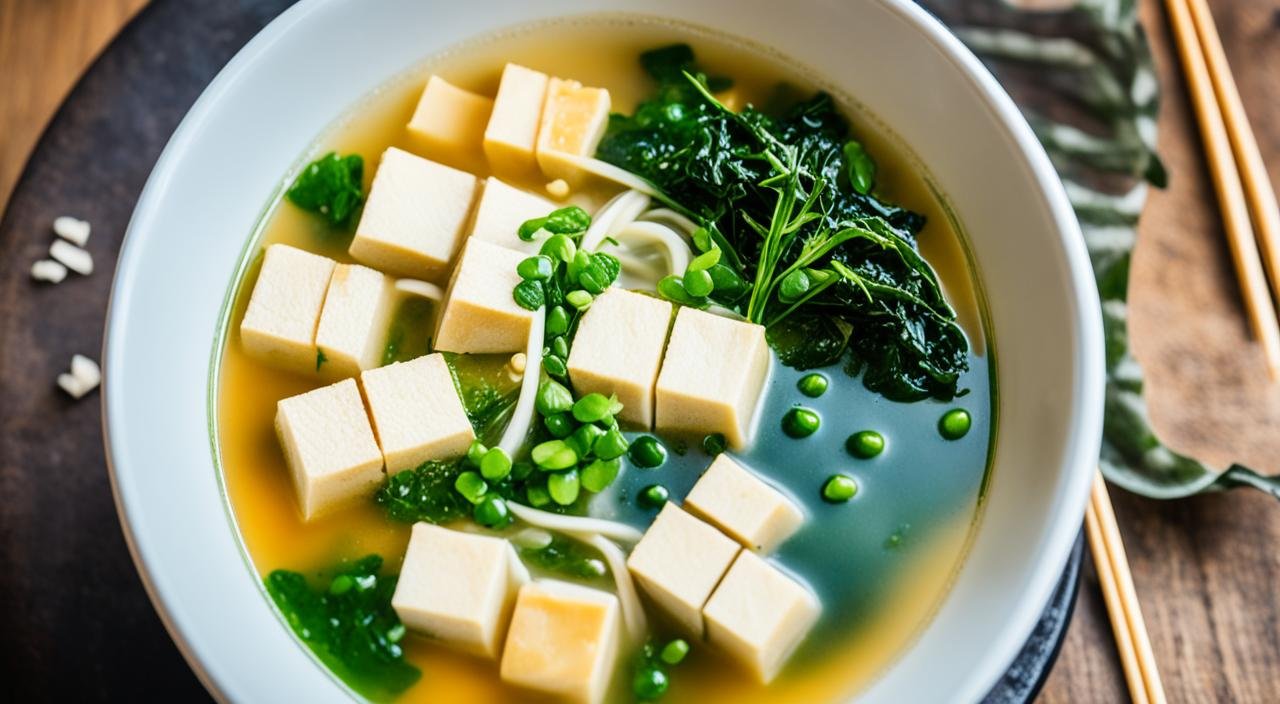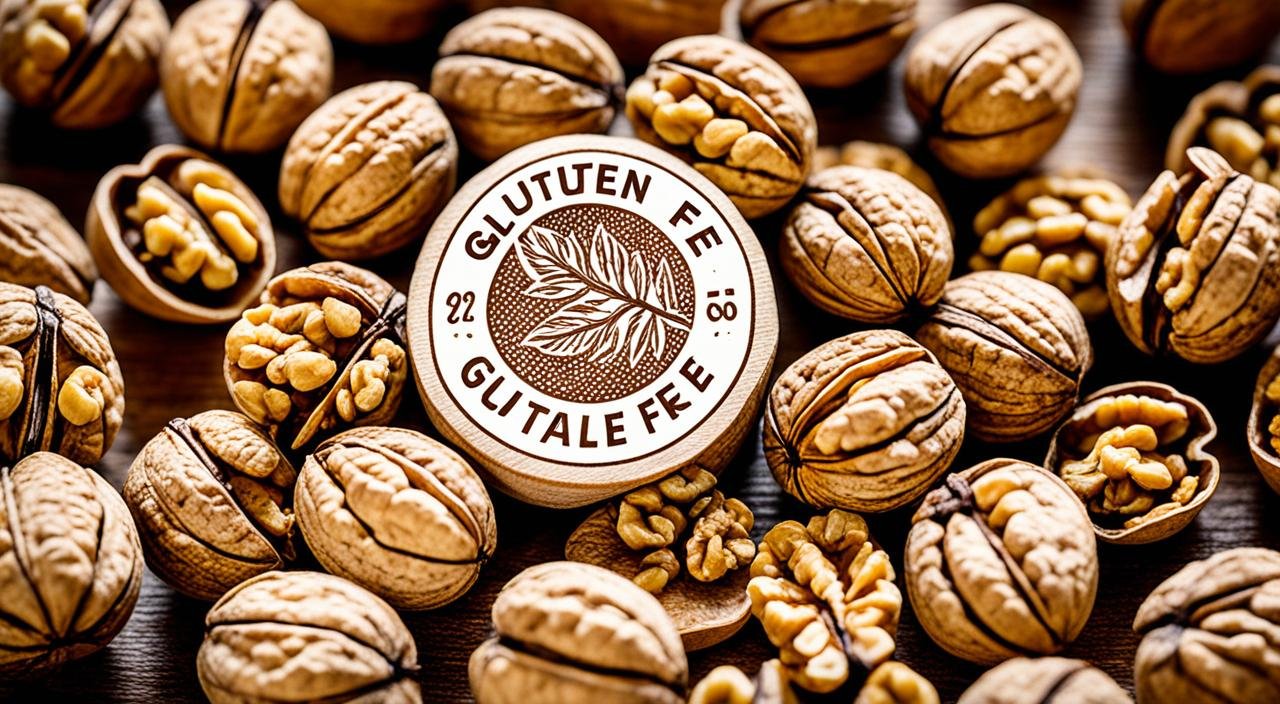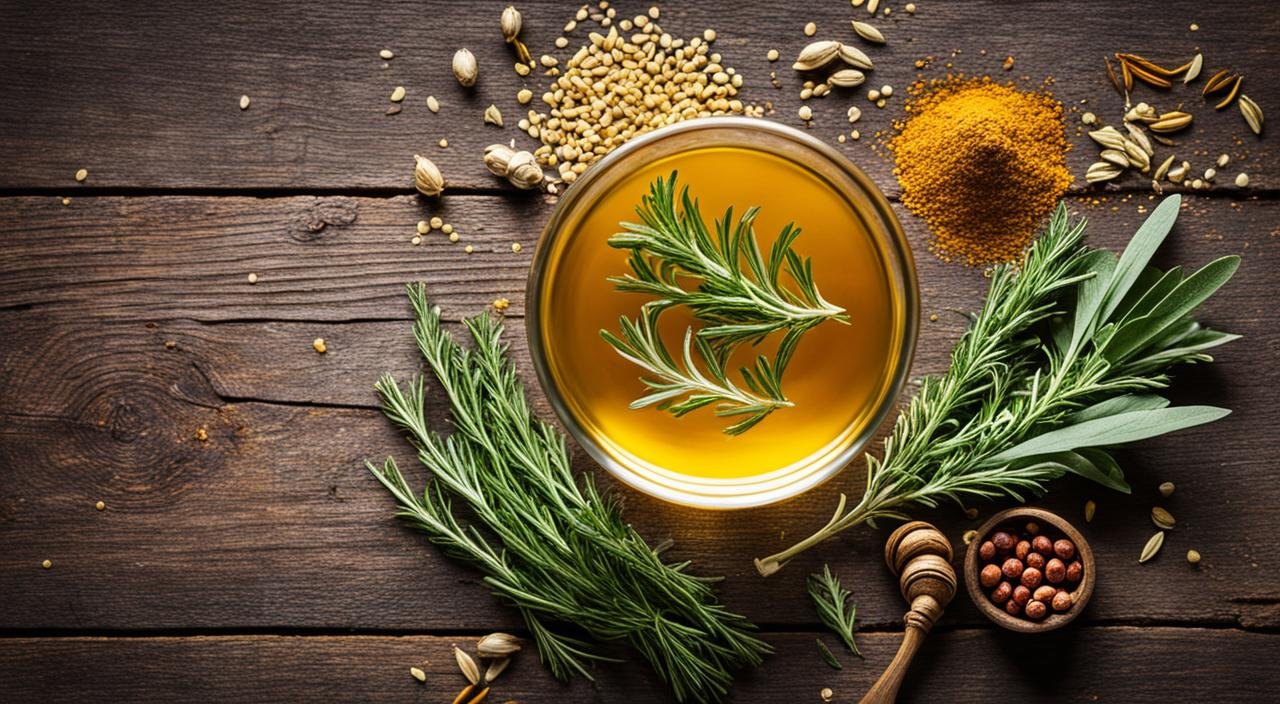Are you avoiding gluten, like many Americans are, because of health issues or celiac disease? You might be asking, “Are peanuts safe to eat if I’m avoiding gluten?” The answer is mostly yes. Peanuts and peanut butter in their natural state do not have gluten. But, it’s crucial to check for gluten in processed peanut products. Let’s look into whether peanuts are truly gluten-free and offer tips on enjoying them safely in your gluten-free lifestyle.
Key Takeaways
- Peanuts and peanut butter are naturally gluten-free foods.
- Flavored nuts, nut mixes, and some processed peanut products may contain gluten-containing ingredients, so it’s important to read labels carefully.
- Cross-contamination can also be a concern with peanut products, so it’s recommended to choose certified gluten-free brands.
- Following a gluten-free diet can provide health benefits for those with celiac disease or gluten intolerance.
- Peanuts are a nutrient-dense food that can be enjoyed as part of a balanced, gluten-free diet.
Understanding Gluten and its Presence in Food
Exploring gluten-free diets and food intolerances might seem hard. It’s very important for people with celiac disease, wheat allergies, or non-celiac gluten sensitivity (NCGS). Gluten comes from wheat, rye, and barley. It shows up in lots of processed foods. So, it’s vital for those on a gluten-free diet to always check food labels.
What is Gluten?
Gluten helps foods with wheat, barley, and rye keep their shape and texture. Besides wheat, it’s in grains like barley, rye, triticale, and more. People can eat foods like fruits, vegetables, legumes, and gluten-free grains instead. They also have animal proteins, nuts, seeds, some seasonings, and good fats and oils.
Prevalence of Gluten Intolerance and Celiac Disease
About 1 in every 100 people in the U.S. have celiac disease. It’s an autoimmune illness. Their body reacts badly to gluten, causing health problems. Other people might go gluten-free for what they think are good health reasons or to deal with food intolerances.
The Importance of a Gluten-Free Diet
Those with celiac disease and NCGS must keep away from gluten. It’s key to managing their symptoms and avoiding sickness. They need to always read food labels. And stay clear of anything with gluten.
Are Peanuts Gluten Free?
The good news is, peanuts and peanut butter are gluten-free. Swear by it, peanuts are a natural fit for a gluten-free diet. In their true, untouched state, peanuts steer clear of gluten. They make a great choice for people with celiac disease or who just avoid gluten.
Peanuts as a Naturally Gluten-Free Food
Reports from the first and third places we looked at confirm this. That is, peanuts and similar nuts are free of gluten straight from nature. With no added flavors or seasonings, they’re a go-to for gluten avoiders. Enjoy peanuts as a snack or in your cooking without worries.
- VERSATILE SNACK: PLANTERS Salted Cocktail Peanuts are great for parties, snacking, or adding to recipes. A savory snack …
- LONG-LASTING FRESHNESS: The 2lb 3oz resealable jar of PLANTERS Peanuts means that your nuts stay fresh. Perfect for bulk…
- PLANT-BASED PROTEIN: Offering 7 grams of plant-based protein per serving, these snacks are fantastic snacks, keeping hun…
Peanut Butter and its Gluten-Free Status
Peanut butter, too, makes the gluten-free cut in its pure form. This info comes from the same trusted places. But remember, some peanut butter might sneak in gluten through added ingredients. Always check labels closely. Go for brands that clearly say, “gluten-free” to play it safe.
Knowing this helps gluten-free folks add peanuts and peanut butter to their meals. It’s all about staying aware of possible sources of gluten. This includes watching out for cross-contamination and carefully picking out processed products.
If you want to know about other nuts too, check out our post about all nuts and gluten.
Reading Labels and Identifying Gluten-Free Products
For people who must eat a gluten-free diet, spotting gluten-free items is key. Lots of foods have hidden gluten. So, it’s vital to check labels well. This keeps the food we eat safe and right for us.
Understanding Food Labels
The law says the top nine allergens, like wheat, must be clear on FDA product labels. But, not all food, like meat, follows these rules. Things like starch from wheat can also hide in some food. Even if it says “wheat-free,” it might still have gluten from things like rye or barley.
Identifying Potential Sources of Gluten Contamination
Sometimes, even though the main ingredients are gluten-free, they could get gluten by mistake. This can happen in factories that make both kinds of food. So, always look for the gluten-free label. It shows the food has been carefully tested.
Knowing how to read labels and watch out for hidden gluten helps. This way, people on a gluten-free diet can pick their food wisely. They can feel secure with the many food choices out there.
- 7 grams of protein per serving
- Bulk format ready to serve your back of house needs
- Fresh-roasted peanut flavor and creamy texture that only comes from Jif
Gluten-Free Peanut Snacks and Recipes
Going gluten-free doesn’t mean giving up tasty snacks. Peanuts and peanut butter are great choices. They’re not just gluten-free but also add a fun crunch and creamy feel to many snacks and recipes. Below, find some top-notch gluten-free snacks with peanuts for those on this special diet.
Homemade Gluten-Free Trail Mixes
Make a delicious gluten-free snack by mixing peanuts with dried fruits, seeds, and a few chocolate chips. This blend gives you different flavors and textures. Remember not to use nuts from bulk bins to avoid gluten cross-contamination.
Peanut Butter-Based Gluten-Free Treats
Peanut butter is great for plenty of sweet and savory gluten-free treats. You could make no-bake cookies, peanut butter sandwich cookies, or muddy buddies. Peanut butter also works well in meals, such as chicken satay or peanut sesame noodles. So, it’s a key ingredient for enjoyable gluten-free eating.
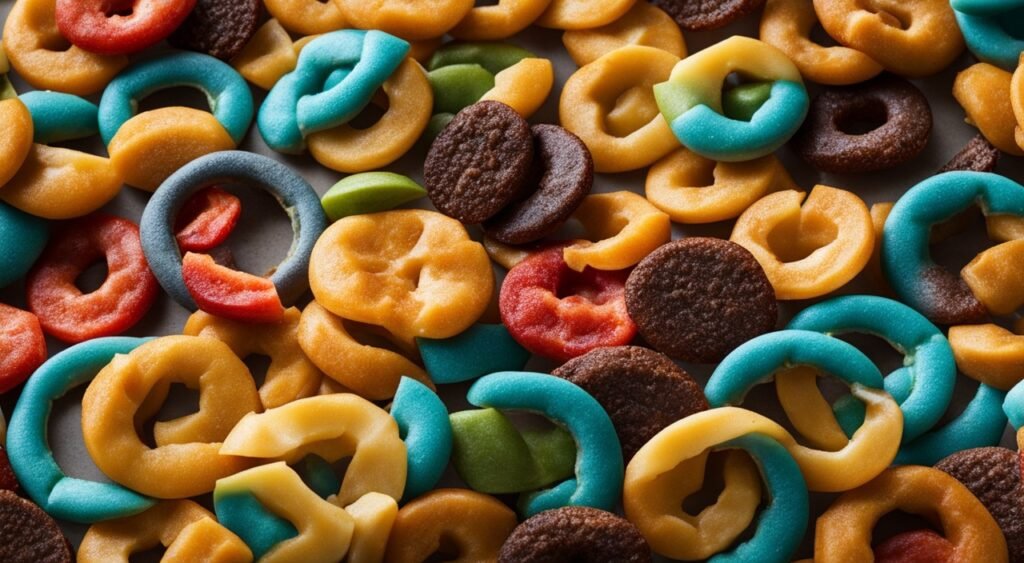
Adding peanuts and peanut butter to your snacks and meals keeps things tasty. They bring yummy flavors and textures, meeting your gluten-free needs. Don’t be afraid to get creative in your kitchen with these ingredients. You might discover a new favorite gluten-free snack.
Health Benefits of Peanuts and Peanut Butter
Peanuts and peanut butter are not just gluten-free. They bring lots of great stuff for your health. They are packed with vitamins, minerals, and good fats. This helps you stay healthy.
Nutritional Value of Peanuts
Peanuts give you protein, good fats, and fiber. In just one ounce, they have 160 calories, lots of protein and fat, 2.4 grams of fiber, and key nutrients. These include folate, magnesium, and potassium.
Raw, unsalted peanuts are low in sodium, at 3 milligrams. This means they’re good for people trying to eat less salt. On the other hand, roasted and salted peanuts can have more sodium.
Potential Allergen Concerns
Peanuts are a top food allergen. If you’re allergic, be careful. Always talk to a doctor before adding peanuts or peanut butter to your diet. For those without allergies, they can be a healthy choice.
| Nutrient | Amount per 2 Tbsp Serving |
|---|---|
| Calories | 191 |
| Fat | 16.4 grams |
| Saturated Fat | 3.3 grams |
| Unsaturated Fat | 12.29 grams |
| Sodium | 136 milligrams |
| Carbohydrates | 7.14 grams |
| Fiber | 1.6 grams |
| Sugar | 3.36 grams |
| Protein | 7.1 grams |
Peanut butter is also gluten-free and good for you. It has healthy fats that are good for your heart and might help prevent diabetes. Plus, it’s great for your muscles and can help fight off cancer.
But, some peanut butter has added sugars, oils, and fats. These can be less healthy. Always check the labels and pick the peanut butter that’s best for you.
Conclusion
We’ve learned that peanuts and peanut butter are safe for those on a gluten-free diet. This includes people with celiac disease or gluten intolerance. But, it’s important to check labels for a gluten-free mark. Some peanut products could have added gluten or be cross-contaminated.
Peanuts and peanut butter are great for a gluten-free way of eating. They offer plant-based protein, good fats, fiber, and important nutrients. Adding them to your meals is a smart choice for a healthy diet.
When living gluten-free, always check food labels. Watch out for hidden gluten and cross-contamination risks. By staying alert, you can still enjoy the goodness of peanuts and peanut butter safely.
FAQs
Are peanuts naturally gluten-free?
Yes, peanuts and peanut butter are naturally gluten-free foods. In their pure, unprocessed state, peanuts contain no gluten and are safe for people with celiac disease or gluten intolerance.
Can processed peanut products contain gluten?
Yes, some processed peanut products like flavored nuts, nut mixes, and certain peanut butter brands may contain gluten through added ingredients or cross-contamination during manufacturing. Always read labels carefully.
How can I avoid gluten contamination in peanut products?
Look for certified gluten-free labels on peanut products, avoid bulk bin nuts where cross-contamination is more likely, and choose brands that specifically state they’re gluten-free on their packaging.
What should I look for when reading peanut product labels?
Check the ingredient list for wheat, rye, barley, or other gluten-containing grains. Also look for statements about manufacturing facilities that process wheat products, as this indicates potential cross-contamination risks.
Are peanuts healthy for people on a gluten-free diet?
Yes, peanuts are nutrient-dense and provide plant-based protein, healthy fats, fiber, folate, magnesium, and potassium. They make an excellent addition to a balanced gluten-free diet, unless you have a peanut allergy.
I’m Dr. Shivani, a Kolkata-based nutritionist since 2015. After 10 years of igniting a love for healthy eating in young minds as a High School nutritionist teacher, I now help individuals unlock their full potential through personalized diet plans. My passion for writing and sharing nutrition knowledge (through blogs and observations) keeps my practice fresh and fuels my love for the field!




